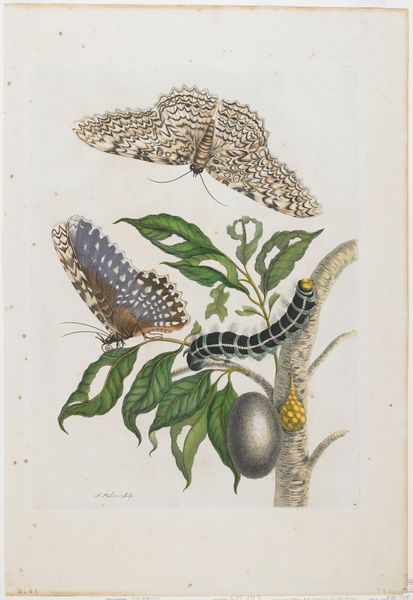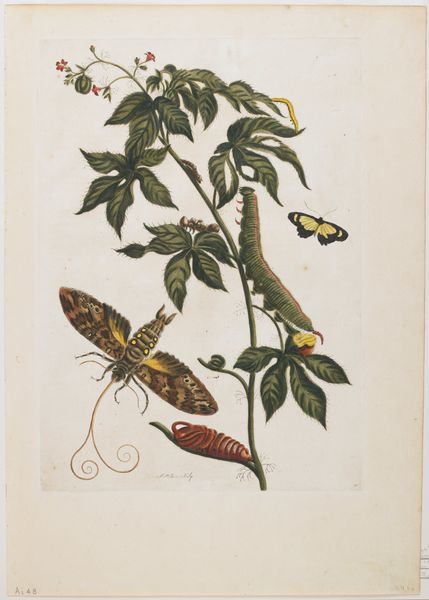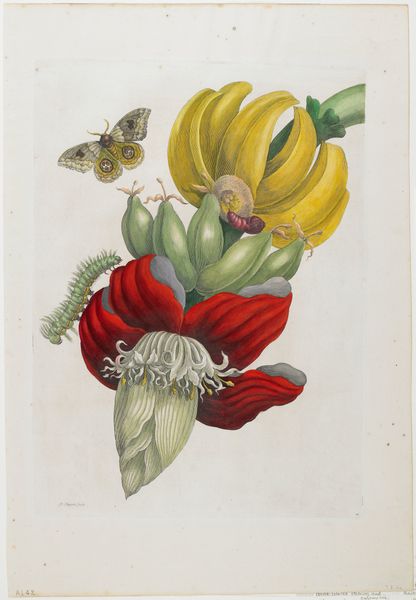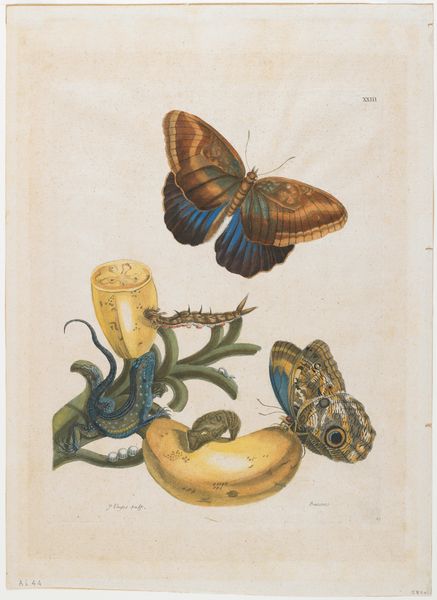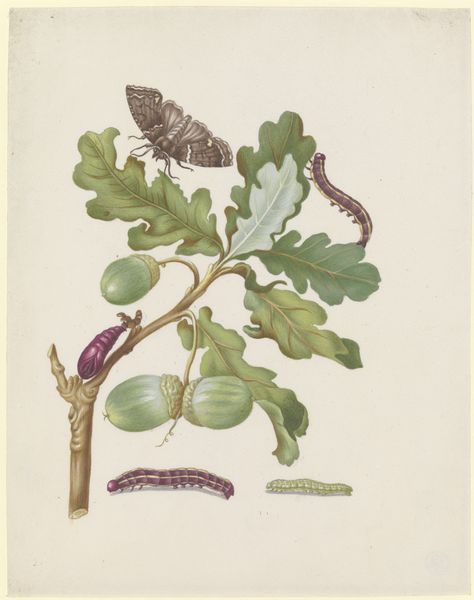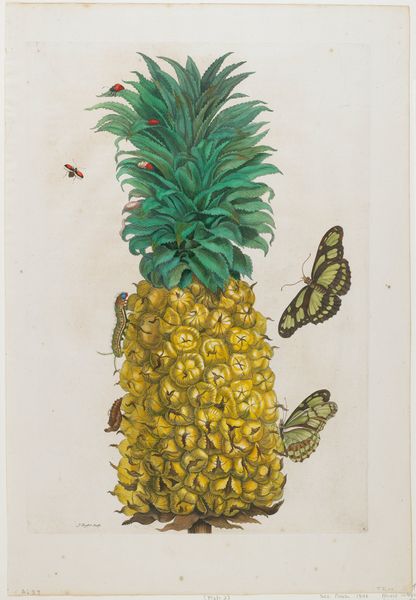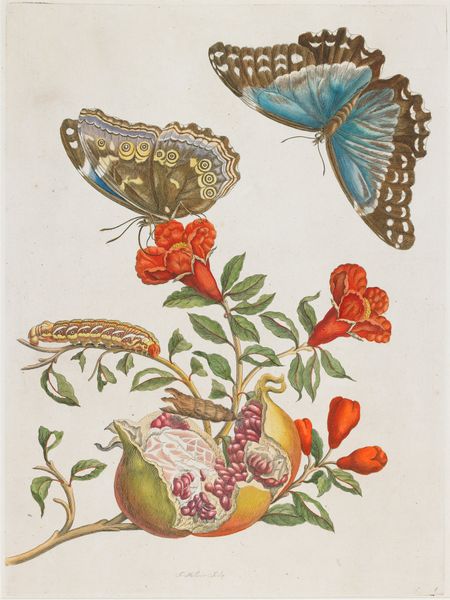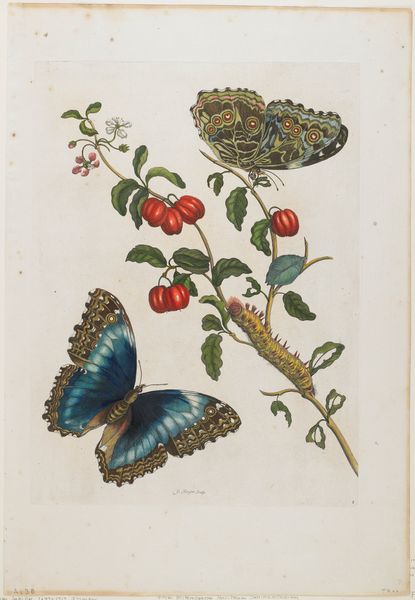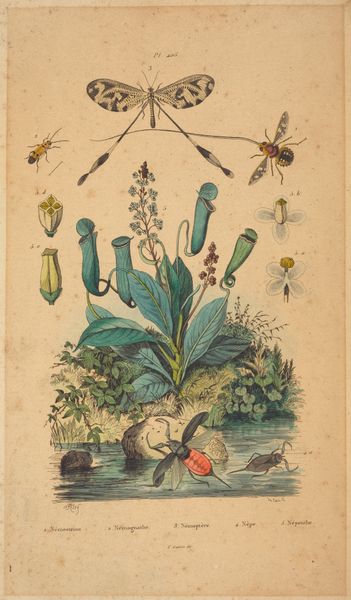
Dimensions: 14 1/2 x 11 1/2 in. (36.83 x 29.21 cm) (sheet)
Copyright: Public Domain
This print of a Snake, whose author is anonymous, captivates with its meticulous detail and vibrant, though somewhat muted, coloration. The composition, dominated by a central botanical form, immediately draws the eye to the juxtaposition of diverse life stages and species. The artist presents a convergence of natural forms—a caterpillar, a snake, and a moth—each rendered with precision. The snake, coiling around the stem, is perhaps the most striking element, its pattern meticulously recreated. This careful rendering invites us to consider the print's function as both art and scientific document. We see a clear emphasis on line and form, which allows for a detailed, almost taxonomic study of each creature. The interplay between these elements destabilizes any fixed narrative. Is this a depiction of harmony or predation? The ambiguity challenges us to reconsider our relationship with the natural world. As you continue to explore, consider how the artist’s formal choices—the careful balance of shapes and the subtle gradations of color—contribute to this print's lasting impact.
Comments
minneapolisinstituteofart about 2 years ago
⋮
Here Merian drew the root of the cassava plant, Manihot esculenta (Crantz). She noted that the Suriname natives grated the starchy root, pressed out the juice, then placed the root on a hot plate and baked it "like a rusk." This process made the root palatable and eliminated (or at least safely reduced) the poisonous compounds. "Should a man or an animal drink the extracted juice cold, he or it dies an extremely painful death," she said. The snake is the Amazon Tree Boa, Corallus hortulanus (Linnaeus); its swollen stomach indicates that it had recently eaten.
Join the conversation
Join millions of artists and users on Artera today and experience the ultimate creative platform.

